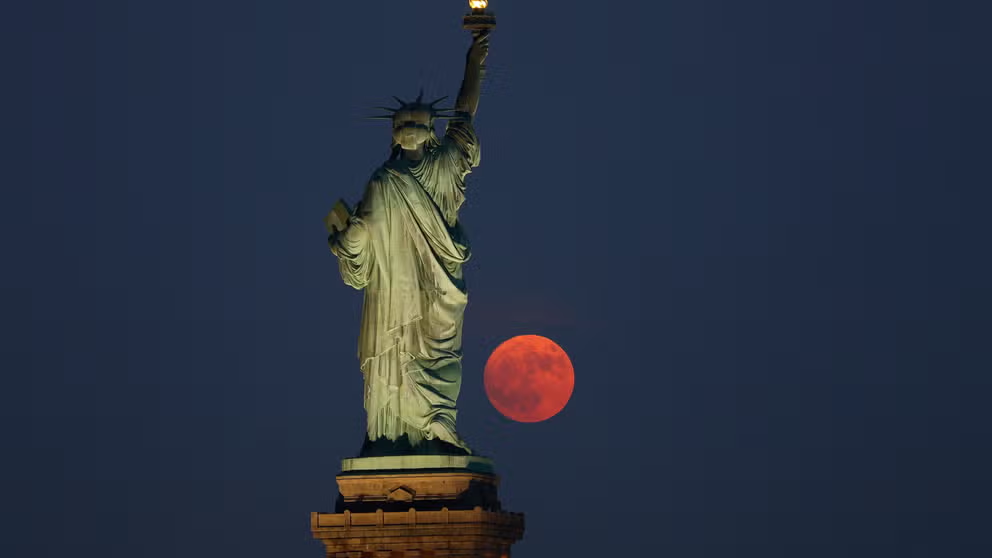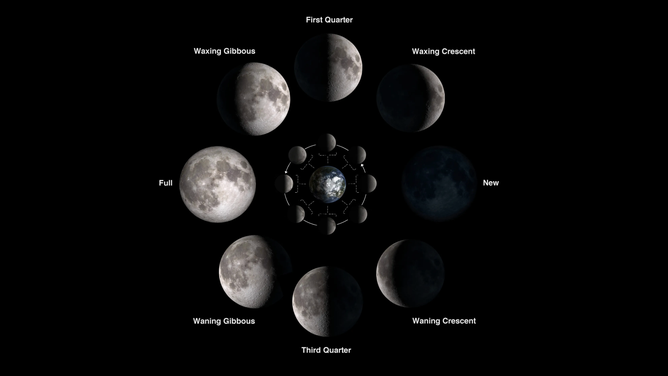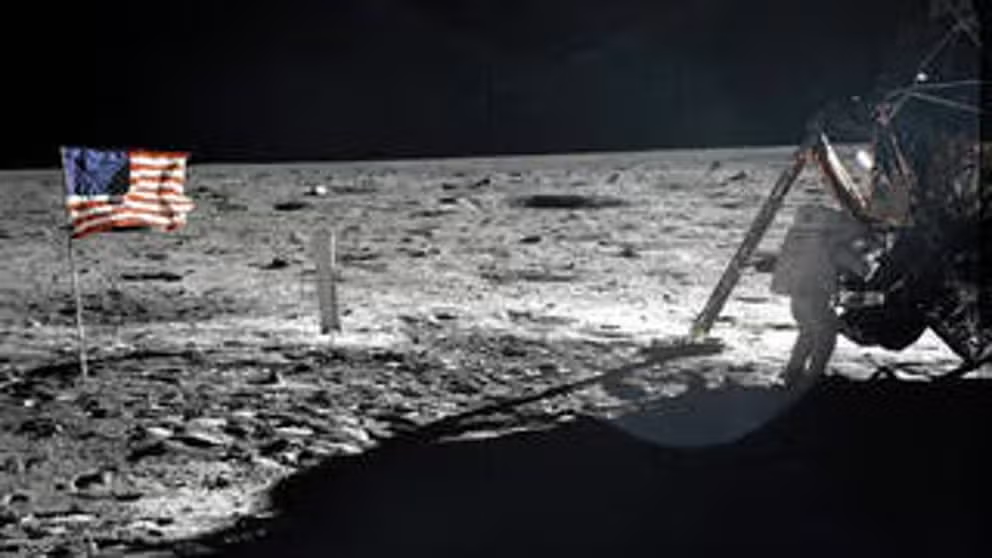July's full Buck Moon coincides with major milestone in lunar history
The full Moon comes on the 55th anniversary of the Apollo 11 mission. On July 20, 1969, Neil Armstrong became the first human to set foot on the lunar surface.
File: July's full Buck Moon as seen around the world
Here is a compilation of photos as the Buck Moon was seen around the world last year.
A full Moon, believed to be named after the antlers of bucks, will peak in illumination Sunday morning, offering spectators a bright sight in the summer night sky.
The full Buck Moon will reach peak illumination at 6:17 a.m. EDT, so the best viewing will be during the hours before.
According to Farmers' Almanac, the full Moon is typically also called the Thunder Moon or the Hay Moon.
The Moon will be around average size when compared to micromoons and Supermoons seen at other times during the year.
If sky conditions are clear, astronomers say the Moon should start to become visible in the southeast sky during the early evening.
NASA astronomers also suggest being on the lookout for Mars, Jupiter, Saturn and Uranus, but stargazers might need a device such as binoculars or a telescope to see all the planets.
SEE THE OBJECTS HUMANS LEFT BEHIND ON THE MOON
While the moon will reach its full phase on Sunday morning, the natural satellite will appear nearly full through Tuesday morning.
Starting in August, the Moon will appear brighter and larger due to it being a Supermoon.
Supermoons occur less than a handful of times a year when the lunar body reaches what is known as perigee – the closest point to Earth in the Moon's orbit. The Moon will be less than 230,000 miles away.
Due to the increased gravitational pull from the Moon, higher-than-normal tides will be experienced. These are often called King Tides and can lead to nuisance flooding in coastal communities.
NASA DEVELOPS "MOON DUSTER" TO ZAP AWAY LUNAR DUST
The peak of the full Moon also comes on the 55th anniversary of the Apollo 11 mission.
Astronauts Neil Armstrong and Buzz Aldrin became the first humans to walk on the Moon on July 20, 1969.
The duo left many mementos on the lunar surface, including an American Flag, which is still standing near the landing site in the Sea of Tranquility.
If you miss the full Moon, there are five more occasions left in the year.
The Sturgeon Moon will peak on Aug. 19, followed by four additional full moons through December.
Apollo 11 landing on moon in 1969
Apollo 11 was the first mission that landed humans on the moon.





